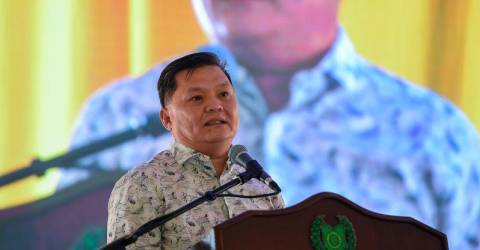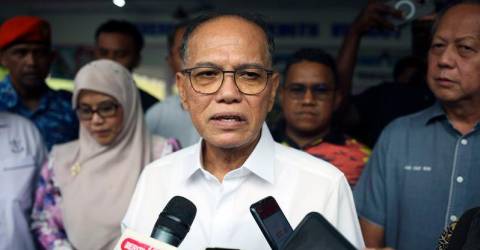ADVERTISE HERE
KUCHING: The Sarawak government has always emphasised the importance of developing the education sector in the state.
Although education falls under the federal government’s purview, the state, under the leadership of Gabungan Parti Sarawak (GPS), has continued to use its own funds to strengthen the education system.
Since 2020, the state government has spent RM2.7 billion to improve the state’s education system, allocating RM2 billion for infrastructure upgrades and RM700 million for educational programmes.
This year, several matters involving education in the state have shown some positive developments.
Strengthening education sector & providing free education
First, the federal government has agreed in principle to Sarawak’s request for the devolution of power in critical areas of education.
The Ministry of Education, Innovation, and Talent Development (MEITD) said that for operational and administrative matters, both the Ministry of Education (MOE) and MEITD will meet to refine the details.
This agreement marks a good starting point in an effort to recognise and respect the Malaysia Agreement 1963 (MA63).
Meanwhile, Sarawak is also exploring the provision of free education to its citizens as part of its talent development agenda.
The state is considering offering free tertiary education to eligible Sarawakians by 2025 or 2026.
Premier Datuk Patinggi Tan Sri Abang Johari Tun Openg said that the state plans to make tertiary education at state-owned universities free for eligible Sarawakians.
Abang Johari mentioned that the free tertiary education initiative could be implemented by 2026, as he believed that the state’s economy will be strengthened by then.
“If Sarawak’s income nearly reached RM12 billion last year, my estimate for this year is that there is a possibility our state’s income will surpass the 2022 record,” he said.
He added that Sarawak has established its Sovereign Wealth Future Fund, which will benefit future generations in terms of education and by strengthening the state’s economy.
“What is crucial is that Sarawak continues to be led by GPS, as only GPS leaders have new ideas to propel the state and its people forward,” Abang Johari said.
Chinese schools are not left out
The Chinese schools have also continued to receive assistance from the state government.
Association of the Boards of Management of Aided Chinese Primary Schools Kuching, Samarahan and Serian Divisions chairman Datuk Jonathan Chai said that this year marks another milestone for the association after their successful relocation and reconstruction of SJK (C) Kai Nang from Sibu to Samarahan, which is scheduled to start operations in the new academic year next March.
“The school, which cost about RM9 million to construct, is the third school successfully relocated by the Association over the past ten years. The other two are SJK Chung Hua Sungai Tapang, now relocated to MJC Batu Kawa New Township, and SJK Chung Hua Bako, also in Samarahan,” he said.
He added that the schools were relocated due to a lack of students at their original sites.
“It has never been an easy task to relocate any school, as it involves approvals from the MOE for the relocation and the construction of the school buildings, finding suitable sites, and securing funding for the eventual construction.
“Thankfully, with help from the Premier, our Sarawak government has been providing financial assistance for any extension, relocation, and construction of SJK Chung Hua in Sarawak since 2020. This funding comes under the purview of the Ministry of Local Government, under the stewardship of Deputy Premier Datuk Amar Dr Sim Kui Hian,” Chai said.
Chai noted that a total of RM8 million was provided in 2020, RM10 million in 2021, and RM12 million in 2022 and 2023 respectively. This financial assistance has tremendously eased the community’s burden.
“Apart from the building and relocation, we have also encountered other pressing issues like the shortage of qualified teachers to fill the vacancies of headmasters and headmistresses, especially in the Kuching, Samarahan, and Serian Division.
“The problem is expected to worsen next year with more headmasters and headmistresses retiring.
“With that, we have appealed to the Department of Education to consider accepting more candidates in these divisions to enroll in the National Professional Qualification for Educational Leaders (NPQEL) programme to address this shortage.
More teachers to address shortage issues
To address the teacher shortage in the state, Sarawak is welcoming a total of 1,108 teachers, effective December 28.
Of these, 422 will be placed in primary schools and the remaining 686 in secondary schools.
In this latest development, the Sarawak Education Department (JPNS) expressed its gratitude to the MEITD and Sarawak Branch Education Services Commission (SPP) for resolving the state’s teacher shortage.
“JPNS will continue to work closely with MOE, SPP, and all education stakeholders to ensure that the teacher shortage issue is resolved,” it said.
In response, the Sarawak Bumiputera Teachers Union (KGBS) welcomed the placement of the new teachers in schools across Sarawak.
While acknowledging that this number does not fully address the persistent teacher shortage, KGBS expressed hope that these placements would help alleviate the existing shortage in various schools.
Sarawak Teachers’ Union (STU) president Kullin Djayang also expressed optimism that the placement of new teachers in Sarawak would address the state’s teacher shortage.
However, he also hoped that the Minister of Education would prioritise local Sarawakians to serve in their homeland.
“Although new teachers have been sent to Sarawak, the number is still insufficient.
“Therefore, in the future, we hope MOE will consistently provide more new teachers to replace those who have transferred or retired in the state,” he added.

 1 year ago
168
1 year ago
168



 English (US) ·
English (US) ·